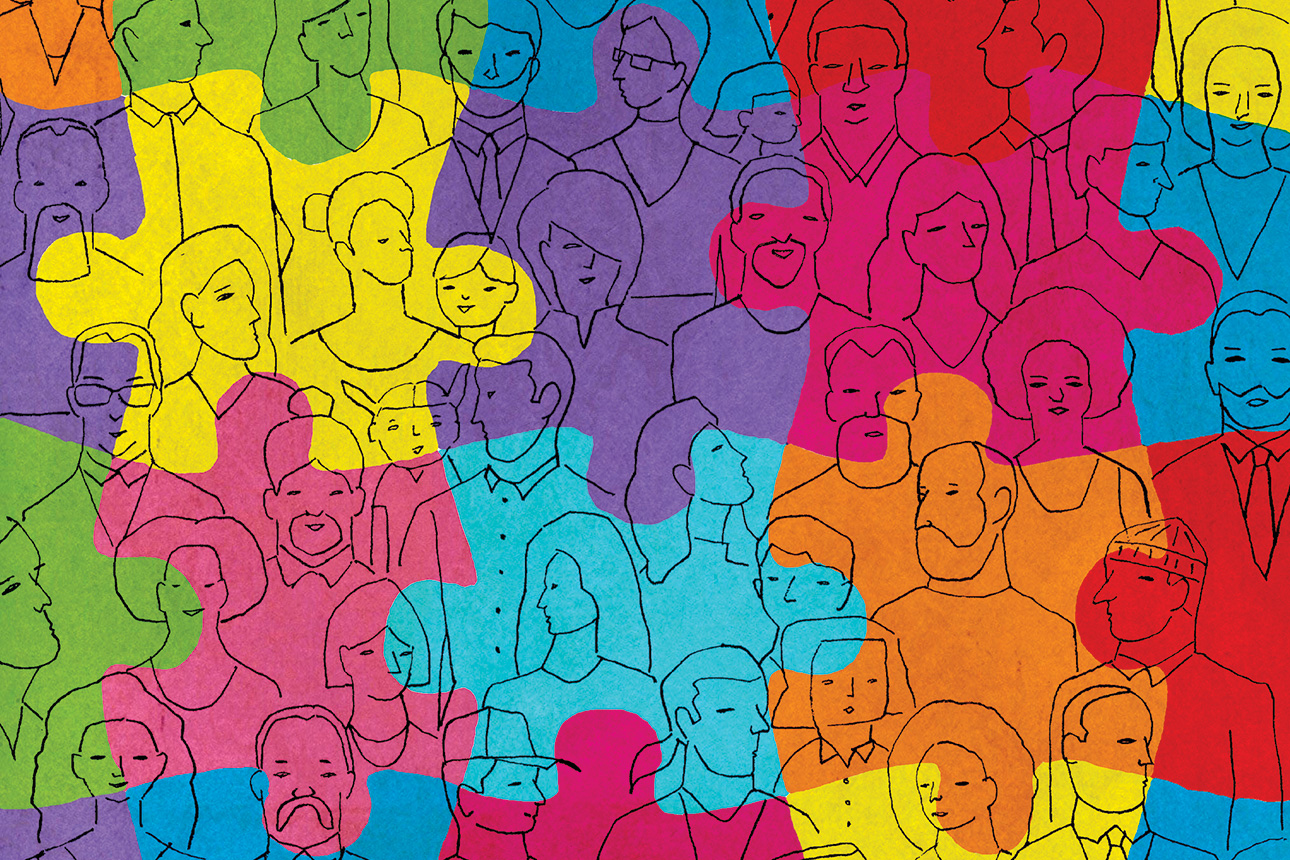Cultivating an Inclusive Culture Through Personal Networks
Analyzing employees’ network connections can show whether they have the access and relationships they need to be most effective.

Image courtesy of Ken Orvidas/theispot.com
Many organizations have ramped up their investments in diversity, equity, and inclusion — largely in the form of anti-bias training, employee resource groups, mentoring programs, and added DEI functions and roles. But gauging the effectiveness of these measures has been a challenge.1 To get an accurate read on the progress that has been made so far, it’s not enough to look for representation across demographic categories in recruitment and hiring, although that’s a start. Organizations must also assess employee experience. If people aren’t equitably developed and promoted once they come on board, they’re not as likely to stay.2 And even if they do stick around, engagement may suffer, and the organization may struggle to reap diversity’s potential benefits, such as increased creativity and improved business performance.3
Efforts to capture employee experience usually involve self-reporting via engagement questionnaires or pulse surveys. These provide insights about individuals’ feelings — asking, for instance, “Are you inspired by the goals of the organization?” or “Would you recommend our company as a great place to work?” But they offer a limited view, because they typically don’t reflect the presence or absence of work relationships that lead to positive or negative feelings, or the extent to which the organization and its people are building connectivity that yields high engagement.
Get Updates on Transformative Leadership
Evidence-based resources that can help you lead your team more effectively, delivered to your inbox monthly.
Please enter a valid email address
Thank you for signing up
We’re finding that organizations can get a clearer picture of employee experience by analyzing people’s network connections. They can begin to see whether DEI programs are producing the collaboration and interactions needed to help people from various demographic groups gain their footing quickly and become truly integrated.
In particular, network analysis reveals when and why people seek out individuals for information, ideas, career advice, personal support, or mentorship. In the Connected Commons, a research consortium, we have mapped organizational networks for over 20 years and have frequently been able to overlay gender data on network diagrams to identify drivers of inclusion.4 Extensive quantitative and qualitative research on this front has helped us understand behaviors that promote more rapid and effective integration of women after they are hired. For example, research reveals the importance of fostering collaboration across functional and geographic divides (while avoiding collaborative burnout) and cultivating energy through network connections.
References
1. P. Newkirk, “Diversity Has Become a Booming Business. So Where Are the Results?” Time, Oct. 10, 2019, https://time.com; J. Settembre, “Why Sephora’s Hour-Long Diversity Training May Have Been a Waste of Time,” MarketWatch, June 7, 2019, www.marketwatch.com; and “D&I Metrics Survey Analysis,” PDF file (Seattle: Institute for Corporate Productivity, 2019), www.icp4.com.
2. Retention is a key metric for development and learning. See, for example, “2018 Workplace Learning Report,” PDF file (Carpinteria, California: LinkedIn Learning, 2018), https://learning.linkedin.com.
3. K.W. Phillips, “How Diversity Makes Us Smarter,” Scientific American, Oct. 1, 2014, www.scientificamerican.com; and D. Holger, “The Business Case for More Diversity,” The Wall Street Journal, Oct. 26, 2019, www.wsj.com.
4. I. Carboni, R. Cross, A. Page, et al., “Invisible Network Drivers of Women’s Success,” Organizational Dynamics 49, no. 4 (October-December 2020): 100735.
5. K. Rollag, S. Parise, and R. Cross, “Getting New Hires Up to Speed Quickly,” MIT Sloan Management Review 46, no. 2 (winter 2005): 35-41; R. Cross, T. Opie, G. Pryor, et al., “Connect and Adapt: How Network Development and Transformation Improve Retention and Engagement in Employees’ First Five Years,” Organization Dynamics 47, no. 2 (April-June 2018): 115-123; and R. Cross, T. Davenport, and P. Gray, “Collaborate Smarter, Not Harder,” MIT Sloan Management Review 61, no. 1 (fall 2019): 20-28.
6. R. Burt, “Structural Holes: The Social Structure of Competition” (Cambridge, Massachusetts: Harvard University Press, 1992).
7. A.G. Greenwald and M.R. Banaji, “Implicit Social Cognition: Attitudes, Self-Esteem, and Stereotypes,” Psychological Review 102, no. 1 (January 1995): 4-27; M.R. Banaji and A.G. Greenwald, “Blindspot: Hidden Biases of Good People” (New York: Delacorte Press, 2013); and J.F. Dovidio, K. Kawakami, and S.L. Gaertner, “Implicit and Explicit Prejudice and Interracial Interaction,” Journal of Personality and Social Psychology 82, no. 1 (January 2002): 62-68.
8. F. Dobbin and A. Kalev, “Why Diversity Programs Fail,” Harvard Business Review, 94, no. 7-8 (July-August 2016): 52-60; F. Dobbin, D. Schrage, and A. Kalev, “Rage Against the Iron Cage: The Varied Effects of Bureaucratic Personnel Reforms on Diversity,” American Sociological Review 80, no. 5 (October 2015): 1014-1044; and K. Bezrukova, K.A. Jehn, and C.S. Spell, “Reviewing Diversity Training: Where We Have Been and Where We Should Go,” Academy of Management Learning & Education 11, no. 2 (June 2012): 207-227.
9. D.Z. Levin, E.M. Whitener, and R. Cross, “Perceived Trustworthiness of Knowledge Sources: The Moderating Impact of Relationship Length,” Journal of Applied Psychology 91, no. 5 (September 2006): 1163-1171.
10. D.Z. Levin and R. Cross, “The Strength of Weak Ties You Can Trust: The Mediating Role of Trust in Effective Knowledge Transfer,” Management Science 50, no. 11 (November 2004): 1477-1490.
